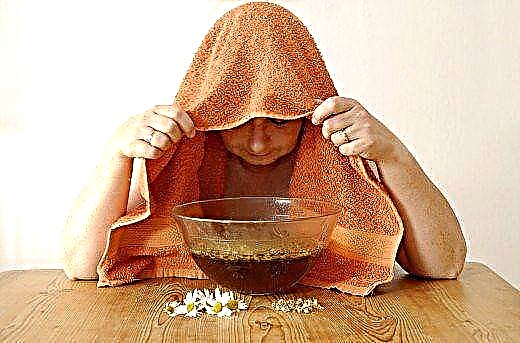As a newborn, the baby takes all the nutrients from milk or formula. Usually at six months, the infant receives the first complementary food. It is important that the food is easily absorbed by the body, does not cause allergies and is healthy. Many vegetables have such qualities. For babies, boiled cauliflower puree will become one of the most favorite dishes. One has only to cook it correctly and tasty.

Cauliflower puree
Benefits of Cauliflower Puree
The benefits of vegetable crops are invaluable. Most often, the first food for a baby at six months is mashed zucchini or cauliflower due to the fact that they practically do not cause allergies.
The positive properties of the vegetable:
- Improves digestion, eliminating constipation and high gas production in the intestines;
- Contains a lot of iron, so children with low hemoglobin will be very useful in their diet;
- The work of the liver, gallbladder and heart improves;
- Beneficial effect on the nervous system;
- The metabolism is accelerated;
- The skeletal system and blood vessels are strengthened;
- Anti-cancer action;
- "Warm" product, which is very helpful in winter, when the body requires foods with a warming effect;
- Thanks to vitamin U, the acidity of the gastric juice is balanced.
Important! The product will benefit only if the dish is used in moderation. Therefore, the mother should know how many grams can be given to the child.
Composition and nutritional value
Cauliflower contains:
- water;
- dietary fiber and fiber;
- carbohydrates and monosaccharides;
- pectins;
- various vitamins (A, B, C, U, PP, E, K). Vitamin C is twice as much as in lemon;
- micro, - and macronutrients;
- amino acids - methionine, tryptophan, lysine.
Note! The calorie content of a vegetable is 25 calories per 100 grams. Therefore, pediatricians recommend cauliflower for children who are overweight.
Choosing cauliflower
A fresh and high-quality vegetable should be chosen correctly:
- Cabbage should be white, without blackheads;
- The leaves are bright, green, closely fitting one to one;
- The head of cabbage is quite elastic;
- The inflorescences are dense.

Overripe cabbage
If the puree is purchased:
- You need to choose glass jars;
- The label indicates the age for which this composition is intended;
- It is worth studying the expiration date, how to store the product;
- No dyes, preservatives in the composition.
Additional Information. You can freeze cabbage. It is enough just to wash the inflorescences, put them in salted, cool water for 15-20 minutes. Then cut off the leaves, dry the inflorescences and arrange them in containers.
When to give to babies
The first acquaintance with cauliflower in a baby occurs at 6 months at the time of the introduction of the vegetable into the child's diet. She is offered to try the baby one of the first. For babies on artificial feeding, you can enter the product a month earlier.
You should offer the baby puree in the morning - half or a whole teaspoon. If during the day there was no reaction in the child in the form of a rash, loose stools, then the next day the portion doubles. So gradually you need to bring up to 50 g and more. A month later, it is allowed to add a spoonful of vegetable or butter to the puree.
Note! From 8 months, you can not puree the vegetable culture, but offer the baby boiled cabbage in the form of a stew, soup.
How to make mashed potatoes
You can make mashed cauliflower at home:
- in a multicooker or double boiler;
- boil in a saucepan or steam the vegetable, then beat with a blender with a little water;
- make cream soups or add to mashed potatoes before whipping chicken or turkey fillets (in this form, the dish will be more satisfying).
Cooking time
Not every mother knows how to cook fresh or frozen cabbage in order to preserve useful substances in it. The head of cabbage is preliminarily cleaned of leaves, then it should be thoroughly washed and divided into inflorescences.
For a child, the vegetable is cooked in a double boiler for 15 minutes. In the absence of an appliance at home, you can cook cabbage. Inflorescences are dropped into boiling water and boiled over low heat for 7-10 minutes. Then the dish is whipped with a blender.
Important! Do not defrost frozen cabbage before cooking - it will fall apart.
Recipes
Cauliflower puree for babies, the recipe for cooking can be:
- in a saucepan;
- in a multicooker or double boiler;
- in the oven.
In a saucepan
The inflorescences are washed, you can divide them into smaller pieces. Water is poured into the container. Bring it to a boil and add the cabbage. Boil for 7-10 minutes, then beat in a small amount of broth.

Whisking in a blender
In a multicooker
Step by step cooking:
- Rinse the inflorescences;
- Arrange them in a bowl;
- Set the "Cooking" mode;
- Set the time for 10-15 minutes;
- After the dish, knead.
In the oven
Cabbage inflorescences are placed in ceramic dishes, filled with water. Put the container in the oven, which should be heated to 180 degrees. Cooking time - 15 minutes.
Norms of puree for feeding
The first cauliflower purée starts at 6 months. In the morning, the baby is offered half -1 teaspoon. If there is no reaction, the dosage is increased daily. For a month, you should bring it to 50 g.

Scheme of introducing complementary foods by month
How often to give
In the first month, puree should be given only once a day, in the morning. The amount should gradually reach 50, and later - 100 grams. Cauliflower is perfect as a side dish for meat dishes. Or you can use it as a stand-alone dish.
What can be combined with
There are a lot of combinations with vegetables. Most often, for babies, they choose a dish in a duet with:
- Carrot puree;
- Broccoli puree.
You can also add cabbage to soup, and then chop it to a puree state.
Possible problems
Cauliflower rarely causes any reactions however, babies may experience the following problems:
- constipation;
- diarrhea;
- bloating and gas production;
- food allergies, red rash.

Allergy is manifested by rash, itching and flaking on the skin
Problems with the gastrointestinal tract occur due to the fact that the intestines are not yet ripe to digest this vegetable. Constipation occurs if the product was introduced too early, or the crumb has eaten too much of it. Diarrhea is the body's response to the introduction of a new product. As a rule, after 2-3 days, the stool is normalized. If a reaction occurs, the vegetable is removed from the children's diet for 1-2 months.
Signs of allergies
An allergic reaction to cauliflower occurs for the following reasons:
- vegetable introduced early in complementary foods;
- the reaction is caused by a hereditary predisposition;
- intestinal microflora is disturbed;
- the crumbs have reduced immunity;
- the vegetable was processed with chemical elements, which, in turn, caused a reaction in the baby.
Allergy manifests itself in the form of:
- skin rashes;
- cough and runny nose;
- tearing eyes.
Cauliflower is a very healthy food. It has a low calorie content, hypoallergenic, rich in vitamins and trace elements. Its introduction into the baby's diet should be gradual, in small quantities. If all the rules are followed, the crumbs will not have any reactions, and the health and body will become stronger and stronger.



